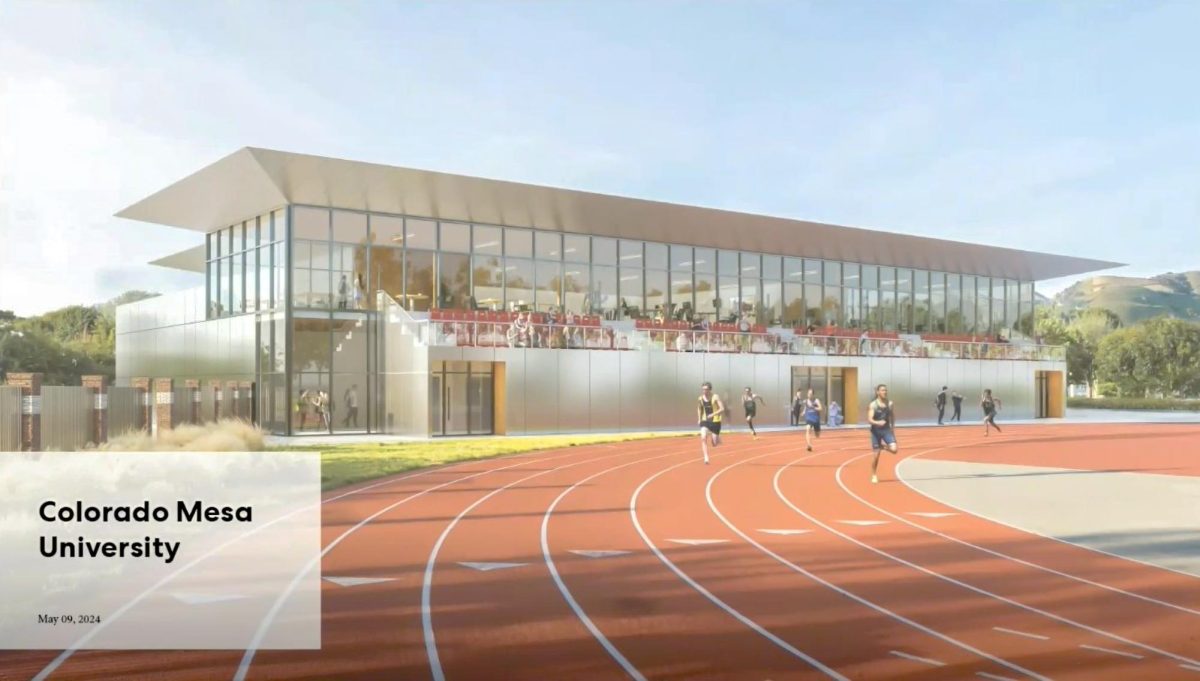
The proposed football facility would sit behind the south end zone at Lincoln Park, replacing the Lincoln Park Barn. The proposal was brought forth by CMU and John Marshall in front of Grand Junction’s city council on Sept. 15. // Courtesy of citygj.org
CMU is moving to give its football program a permanent home at Stocker Stadium — and for the first time, the university says it will pay for every brick itself.
During a Grand Junction City Council workshop on Sept. 15, CMU President John Marshall rolled out a plan for a two-story building to be tucked behind the south end zone at Lincoln Park.
This facility would include two locker rooms, athletic training space, meeting rooms and coaches’ offices. Marshall acknowledged that while many upgrades are on the wish list, the project won’t cover everything.
“I don’t think we could afford to build a weight room training facility on it to begin with. We would love to do that. A lot of [other schools] have it, but I just don’t think realistically we can afford to do that.”
Previous upgrades to the stadium have been paid for by a mix of partners, such as the city, District 51, the Junior College World Series (JUCO) and CMU.
This time, Marshall said, the bill would be covered entirely by the university.
He framed the project as a way to give Maverick football a true headquarters, and to match the facilities offered by competing schools in the RMAC.
“We think we can bring this facility up to par,” Marshall said.
Marshall also linked the proposal to the university’s broader effort to strengthen the student-athlete experience, without offering large scholarships or name, image and likeness (NIL) deals.
He mentioned that CMU has already poured resources into other sports, with upgrades such as a dedicated women’s rugby pitch, a conference-leading natatorium and a new track complex.
Council Member Anna Stout reminded the workshop group that a similar idea died, years ago, over fears of cutting high school athletes out of locker-room access.
“One of the things we kept getting wrapped around the axle over were the impacts to user groups,” Stout said.
Marshall said the new building would not touch the current locker rooms and that parts of it could even be opened to the public for town halls and meetings.
City Manager Mike Bennett added that activities now held in the Lincoln Park Barn, which would be removed to make room for the facility, are already scheduled to move to the city’s new community recreation center, with the remaining few uses relocated elsewhere.
Council members also mentioned more ambitious options, such as selling some or all of the stadium to CMU, or arranging a land swap.
Marshall said the university is open to discussions, but is currently proposing a long-term lease, similar to the one it has for its golf facility at Lincoln Park.
Marshall closed the meeting by tying the project to CMU’s centennial celebration. “As it turns out, football is the sport that has been with us all 100 years of our century,” he said.
No vote was taken at the meeting because it is a non-voting workshop. The city and CMU agreed to keep negotiating.
If approved, the plan would give the CMU football program its first dedicated home base, funded entirely by CMU, while keeping existing community access in place.